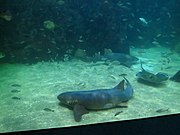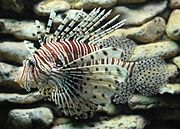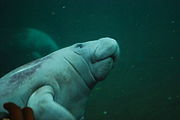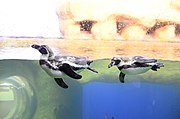
The National Aquarium – also known as National Aquarium in Baltimore and formerly known as Baltimore Aquarium – is a non-profit public aquarium located at 501 East Pratt Street on Pier 3 in the Inner Harbor area of downtown Baltimore, Maryland in the United States. Constructed during a period of urban renewal in Baltimore, the aquarium opened on August 8, 1981. The aquarium has an annual attendance of 1.5 million visitors and is the largest tourism attraction in the State of Maryland. The aquarium holds more than 2,200,000 US gallons (8,300,000 L) of water, and has more than 17,000 specimens representing over 750 species. The National Aquarium's mission is to inspire conservation of the world's aquatic treasures. The aquarium's stated vision is to confront pressing issues facing global aquatic habitats through pioneering science, conservation, and educational programming.

Shedd Aquarium is an indoor public aquarium in Chicago. Opened on May 30, 1930, the 5 million US gal aquarium holds about 32,000 animals and is the third largest aquarium in the Western Hemisphere, after the Georgia Aquarium and Monterey Bay Aquarium.
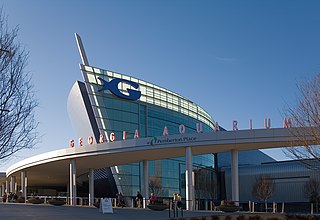
Georgia Aquarium is a public aquarium in Atlanta, Georgia, United States. It exhibits hundreds of species and thousands of animals across its seven major galleries, all of which reside in more than 11 million US gallons (42,000 m3) of water. It was the largest aquarium in the world from its opening in 2005 until 2012 when it was surpassed by the S.E.A. Aquarium in Singapore and the Chimelong Ocean Kingdom in China; the Georgia Aquarium remains the largest aquarium in the United States and the fourth largest in the world.
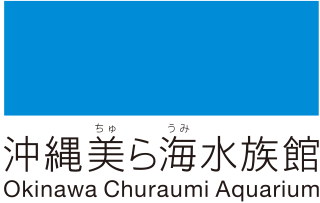
The Okinawa Churaumi Aquarium, formerly known as the Okinawa Ocean Expo Aquarium, is located within the Ocean Expo Park in Okinawa, Japan. It is a member of the Japanese Association of Zoos and Aquariums (JAZA), and was the largest aquarium in the world until it was surpassed by the Georgia Aquarium in 2005. The aquarium has the exhibit, "Encounter the Okinawan Sea", which reproduces the sea of Okinawa and most of the creatures that live in it. Churaumi was selected as the name of the aquarium by public vote amongst Japanese people: chura means "beautiful" or "graceful" in the Okinawan language, and umi means "ocean" in Japanese.

The New England Aquarium is a nonprofit organization located in Boston, Massachusetts. The species exhibited include harbor and northern fur seals, California sea lions, African and southern rockhopper penguins, giant Pacific octopuses, weedy seadragons, and thousands of saltwater and freshwater fishes. In addition to the main aquarium building, attractions at Central Wharf include the Simons Theatre and the New England Aquarium Whale Watch. More than 1.3 million guests visited the aquarium each year prior to the outbreak of the COVID-19 pandemic.

The Seas with Nemo & Friends is a pavilion located in the World Nature section of Epcot, a theme park at the Walt Disney World Resort in Bay Lake, Florida. The pavilion is themed as an oceanic exploration base called SeaBase Alpha, with several exhibits devoted to oceanic study. The building includes an aquarium and its attached dark ride attraction, a talk show-type attraction called Turtle Talk with Crush, and the Coral Reef Restaurant. With 5.7 million US gallons of tank volume, the pavilion is also the second-largest aquarium in the U.S. and the sixth-largest in the world.

Audubon Aquarium is an aquarium in New Orleans, Louisiana, United States. After a $41 million dollar renovation, the aquarium reopened with new exhibits and experiences on June 8, 2023. The Audubon Nature Institute runs the aquarium, and the institute also supervises the Audubon Zoo, Audubon Louisiana Nature Center, Freeport-McMoRan Audubon Species Survival Center, Audubon Center for Research of Endangered Species (ACRES), Coastal Wildlife Network, Audubon Wilderness Park, and Audubon Park. The aquarium is located along the banks of the Mississippi River by the edge of the historic French Quarter off Canal Street, at the upper end of Woldenberg Park and originally opened on September 1, 1990.
The Dauphin Island Sea Lab (DISL) is Alabama's primary marine education and research center. DISL is the home site of the Marine Environmental Sciences Consortium and was founded by an act of the Alabama State Legislature in 1971. It also has a public aquarium specializing in estuarine organisms, the George F. Crozier Estuarium.

The ABQ BioPark Aquarium, located in Albuquerque, New Mexico, United States is a facility of the Albuquerque Biological Park and is located next door to the ABQ BioPark Botanic Garden. The ABQ BioPark Aquarium exhibits Gulf of Mexico and South Pacific saltwater species from a variety of habitats, including surf zone, shallow waters, coral reefs, open ocean and deep ocean. The highlight of the aquarium is a 285,000 U.S. gal (1,080,000 L) shark tank with a 38-foot (12 m)-wide, 9-foot (2.7 m)-high, 8-inch (200 mm)-thick acrylic viewing window.

The Two Oceans Aquarium is an aquarium located at the Victoria & Alfred Waterfront in Cape Town, Western Cape, South Africa. The aquarium was opened on the 13 November 1995 and comprises several exhibition galleries with large viewing windows: The aquarium is named for its location, where the Indian and Atlantic Ocean meet.
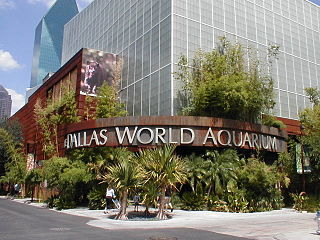
The Dallas World Aquarium is a for-profit aquarium and zoo located in the West End Historic District of Dallas, Texas, USA. It aids conservation and education by housing many animals that are threatened or endangered as part of a cooperative breeding program with other zoos around the world. It has been an accredited member of the Association of Zoos and Aquariums since 1997 and is a member of the World Association of Zoos and Aquariums.

L'Oceanogràfic is an oceanarium situated on the dry Turia River bed to the southeast of the city center of Valencia, Spain, where different marine habitats are represented. It was designed by the architect Félix Candela and the structural engineers Alberto Domingo and Carlos Lázaro. It is integrated inside the cultural complex known as the Ciutat de les Arts i de les Ciències. It was opened on 14 February 2003.

Nausicaá Centre National de la Mer is a public aquarium located in Boulogne-sur-Mer in northern France. It is the largest public aquarium of Europe.

An aquarium is a vivarium of any size having at least one transparent side in which aquatic plants or animals are kept and displayed. Fishkeepers use aquaria to keep fish, invertebrates, amphibians, aquatic reptiles, such as turtles, and aquatic plants. The term aquarium, coined by English naturalist Philip Henry Gosse, combines the Latin root aqua, meaning 'water', with the suffix -arium, meaning 'a place for relating to'.

The Rodadero Sea Aquarium and Museum is a public aquarium and maritime museum located in the Inca Inca Cove off the Rodadero beach in Santa Marta, Colombia. It was opened in 1965 by Captain Francisco Ospina Navia. The aquarium is part of the National Network of Museums of Colombia and part of ACOPAZOA, the Colombian branch of the World Association of Zoos and Aquariums. Accessible mainly by motorboat, the aquarium has 13 pools with direct connection to the Caribbean Sea, and 15 glass aquaria that contain over 805 animals that include sharks, sea turtles, dolphins, sea lions, crustaceans, fishes and seabirds, 98% of which are native to the area.

The Acuario Nacional de Cuba is an aquarium in Havana, Cuba established in 1960 to focus on "research and environmental education". Displays include those of coral and other tropical species, as well as a dolphinarium and sea lion shows.

Palma Aquarium is a commercial aquarium and park that first opened in 2007 in Palma, Mallorca, Spain. The aquarium is the property of Coral World International. The aquarium is 500 m (1,600 ft) from Playa de Palma beach, and includes 55 tanks which are home to over 700 different species from the Mediterranean Sea and the Indian, Atlantic and Pacific Oceans. One tank, "Big Blue" is 8.5 m (28 ft) deep, the deepest shark tank in Europe, and it also contains the largest collection of live coral in Europe The park was awarded "Best Business Initiative in the Balearics 2007", awarded by Actualidad Económica magazine, and was awarded the "2007 Accessibility Prize" by the Consell de Mallorca.
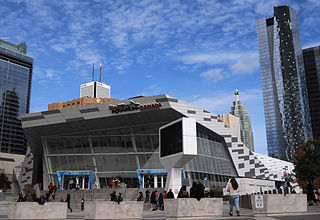
Ripley's Aquarium of Canada is a public aquarium in Toronto, Ontario, Canada. The aquarium is one of three aquariums owned-and-operated by Ripley Entertainment. It is located in downtown Toronto, just southeast of the CN Tower. The aquarium has 5.7 million litres of marine and freshwater habitats from across the world. The exhibits hold more than 20,000 exotic sea and freshwater specimens from more than 450 species.

The Malta National Aquarium is the largest aquarium in the Maltese Islands.






